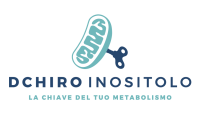Studies on D-Chiro-Inositolo
The use of inositols in the treatment of diseases such as PCOS (the first cause of infertility in women), metabolic syndrome and diabetes, has always interested the scientific community. Several studies have been published, in particular on the physiological relationship between Myo Inositol and D-Chiro-Inositol and on the treatment of the aforementioned pathologies with the two single molecules or in combination.
2012
Among these, in 2012 the study “Does the Ovary need D-Chiro Inositol?” supposed that an excessive use of DCI might be counterproductive for the ovary in women suffering from PCOS.
This study starts from the hypothesis of the D-Chiro-Inositol Paradox, a definition given in a study published (but not demonstrated) in 2011, according to which under conditions of hyperinsulinemia, the ovary would work differently from other organs, never becoming in fact insulin-resistant.
The excess of insulin would lead, at an ovarian level, to an accentuated conversion of MYO-inositol into D-Chiro-Inositol due to an exaltation of the activity of the epimerase, that is the enzyme responsible for this conversion.
The abundance of D-Chiro-Inositol at the expense of MYO would result in reduced oocyte quality.

These concepts, actually not confirmed by relevant scientific data, over the years have been cited by a series of related studies, among which the one in 2016:
2016
In 2016, “Combining treatment with myo-inositol and D-chiro-inositol (40: 1) is effective in restoring ovary function and metabolic balance in PCOS patients” was published.

This study, based on the first, states that patients affected by PCOS, at an ovarian level, present DCI in excess so for this reason, a further intake of the molecule is harmful. Starting from assumptions that are not scientifically proven, it therefore comes to the conclusion that the perfect integration between MYO and DCI is in a 40: 1 ratio.
A concept proven groundless, which has been spread by a series of studies that do not take into account the existing literature on inositols, in particolar those on D-Chiro-Inositol and fundamental concepts of pharmacology
2018
The groundlessness of the above mentioned hypothesis has been backed up by the Italian Magistracy. In July 2018 indeed the Court of Catania ordered the publishing house of the article “Does Ovary need D-Chiro Inositol?” to issue a notice explaining the groundlessness of the hypothesis spread. At that time, the authorship of the article had already been denied by one of its authors, who supported then the validity of DCI as an aid for women with PCOS or willing to have a pregnancy.
2019
The Italian Society of Pharmacology (SIF) and the Italian Society of Gynecology and Obstetrics (SIGO) have recently expressed their opinion regarding the use of supplements, in women with PCOS, containing a mixture of the two inositols, or a combination of MYO and DCI in a 40: 1 ratio. The supplements containing this combination are prescribed in case of PCOS to those women who wish to have a pregnancy, also promising an improvement in oocyte quality.
The aforementioned scientific societies come to the conclusion that conclusive data are lacking in this sense, as there is no evidence of the actual advantage of the combination being administered compared to the single administration of either MYO or DCI.

Moreover, the reasoning that led to the creation of the MYO and DCI combination in the 40: 1 ratio is not supported by a pharmacological rationale. In fact, if the objective is to restore the physiological levels of the two inositols, and at ovarian level there would already be an excessive concentration of DCI, then why should it be useful to administer further DCI or its precursor that would be further converted into DCI?
Besides, an oral administration decreases the effectiveness of the product, which is spread throughout the body and not directly into a single organ, like the ovary.
Why stating that there is a perfect MYO – DCI combination in a 40: 1 ratio is misleading
The integration of a product containing MYO and DCI in a 40: 1 ratio in patients suffering from PCOS, does not have a relevant scientific and pharmacological feedback because:
The correct therapy of PCOS should fight against the pathogenetic cause which, in most of the patients, is insulin-resistance. A systemic condition that therefore does not only involve the ovary.
In case of insulin-resistance, a deficiency of the enzyme epimerase occurs. The enzyme is responsible for the conversion of MYO into DCI and affects all the districts of the body. This deficit leads to a poor conversion into DCI and, therefore, it would be more correct to directly administer the active molecule (DCI) and not its precursor (MYO).
INSULIN
RESISTANCE

DEFICIT OF
EPIMERASE

REDUCED MYO’S CONVERSION INTO DCI

OVARIAN DYSFUNCTIONALITY
INSULIN
RESISTANCE

DEFICIT OF
EPIMERASE

REDUCED MYO’S CONVERSION INTO DCI

OVARIAN DYSFUNCTIONALITYE
The ovary is dysfunctional as a consequence and not as a cause
A correct therapeutic strategy should therefore be aimed at improving insulin sensitivity with consequent beneficial effects such as:


